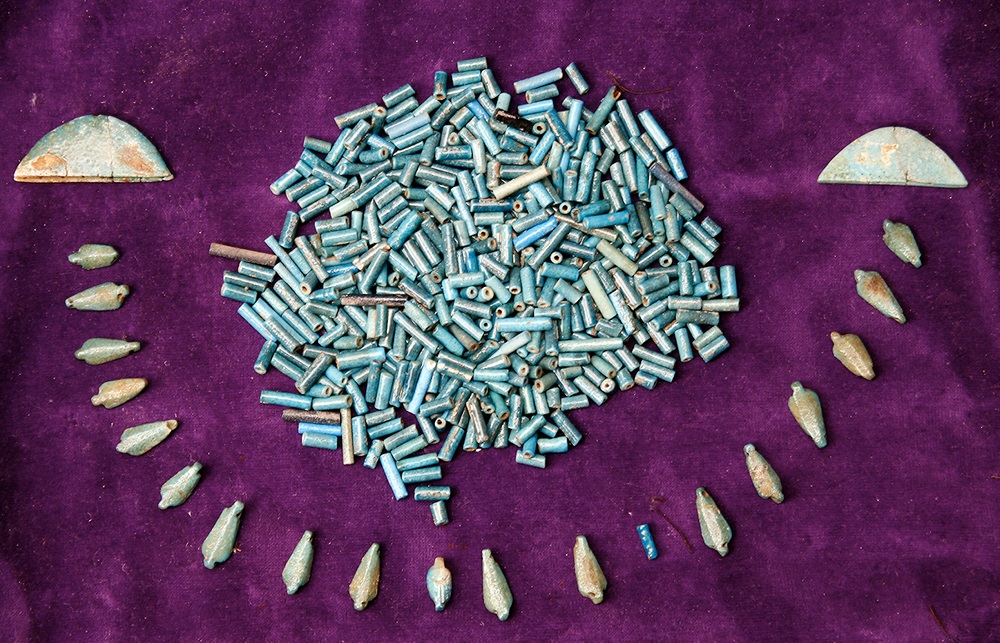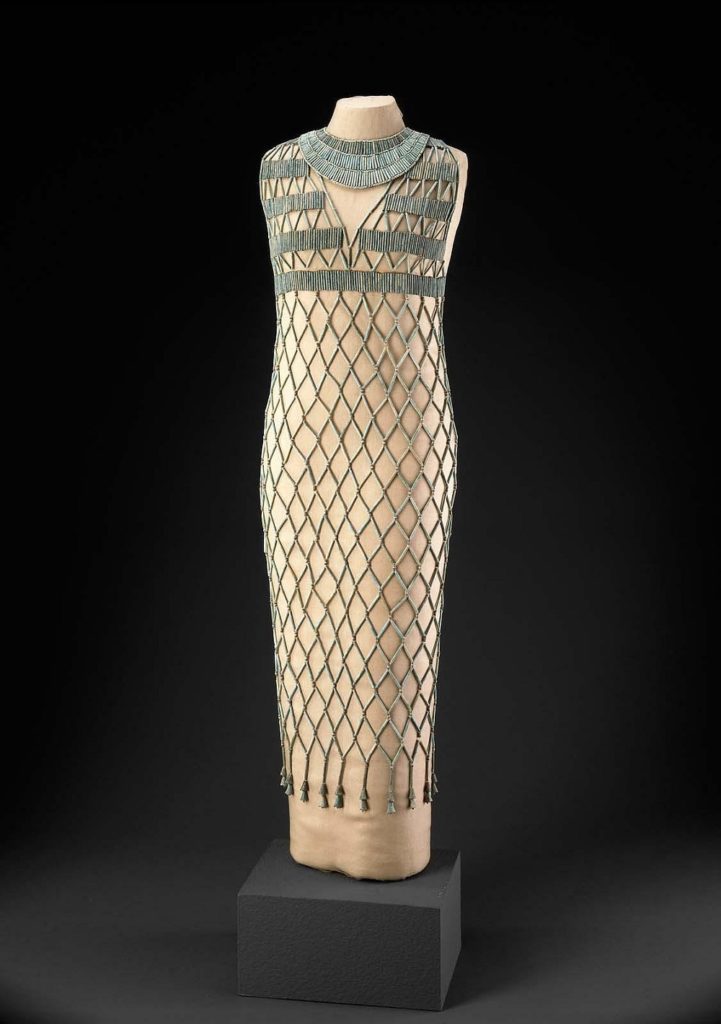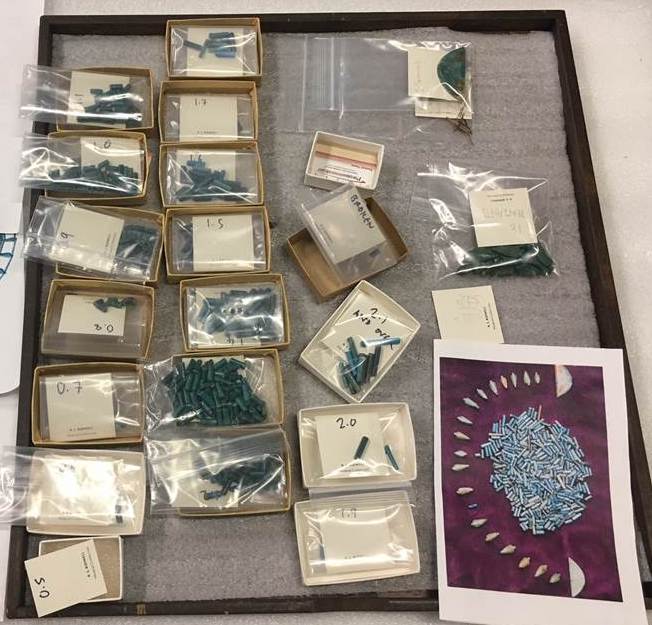Most of the museum’s Egyptian collections are on display in the Hall of Ancient Egypt, supplemented by loans from other institutions. What is kept in our object storage is generally material that’s not so exciting, well preserved, or important. For a long time, though, there was an exception: this mound of loose beads.


Made of faience, a self-glazing silica ceramic the Egyptians valued for its relative ease of manufacture and durable, vibrant colours, the jumble of beads was enlivened by two large semi-circular pieces with a series of holes, and a set of pendants with incised patterns.
It was clear that the beads came from a broad collar, a popular piece of jewelry for men and women, the living and the dead. The colour of the faience and the shape of the pendants suggest a date in the late Old Kingdom to early Middle Kingdom (about 2200-1900 BC). The semi-circular pieces were the terminals (here they are plain; in other cases they can be in the shape of raptors’ heads) and the pendants are abbreviated depictions of click beetles (Agrypnus notodontata).
Most people know the Egyptians were fond of scarab beetles (Scarabaeus sacer), but the click beetle, which – as its name suggests – can right itself or jump away by flexing its carapace with a loud click, was also important. The Egyptians viewed it as a symbol of the Goddess Neith and, during the Predynastic Period and Old Kingdom (about 3100 – 2200 BC), had a fashion for click beetle themed dishes and jewelry. One of my favourite objects in the Bolton Museum, where I used to work, is a fragmentary siltstone bracelet made of click beetles placed end to end, a treasure from the burial of one of Egypt’s earliest kings.

Back with the museum’s disassembled broad collar, we needed to get it re-strung to be able to display it. What seems easy in principle is devilishly hard in practice. We were fortunate to secure the services of Sheila Shear, who has probably re-strung more Egyptian beads than anyone else in the last two thousand years.

Sheila grew up in Hazelton, PA and Baltimore, MD, and raised her two children in Longmeadow, MA. Her lifelong interest in the needle arts led her to devote more than 25 years as a volunteer at the George W. Smith Museum and Museum of Fine Arts in Springfield, Massachusetts, where she worked in textile conservation and exhibition preparation. During this time, she fulfilled her longtime dream of visiting Egypt, which helped to launch a career in ancient Egyptian beadwork that has been her passion ever since. Sheila volunteered for many years in the Egyptian department of the Museum of Fine Arts in Boston, researching and reconstructing ancient Egyptian and Nubian beadwork.
Among her projects at the MFA Boston was reconstructing a 4400 year old bead net dress from one of the tombs surrounding the Great Pyramid at Giza – this is now on view in the Hall of Ancient Egypt.

Sheila worked her magic on the loose beads, which I had already measured and sorted by length to help reconstruction.

Sheila carefully graded and arranged the beads in a meaningful order before she re-strung them using natural Swedish linen thread and B72 acrylic varnish to glue the knots. Like all restoration work should be, Sheila’s work is fully reversible – although I can’t think why we should want to disassemble the collar for a good long while.

The completed collar in all its glory is a long way from the pile of beads that we started with. To begin with, I wasn’t sure that there would be enough beads to make a wearable collar – were we missing a lot of beads? – but it turns out that the collar is large enough to fit a medium-sized docent comfortably. The docent was very comfortable while this experiment was carried out, and would be wearing it still if she could – I was less so…
Sheila’s work was funded by the Moran Ecoteens, the Museum’s young volunteer program. Thanks to them, the Hall of Ancient Egypt doesn’t just have an Egyptian collar of its own, but a Sheila Shear of its own too – a beautiful combination of ancient material and modern skill. Thank you Ecoteens, and thank you Sheila.
If you’d like to read more about Egyptian jewelry, and see more of Sheila’s work, Jewels Of The Nile is a new catalogue of the Egyptian collections of the Worcester Art Museum which includes several necklaces re-strung by Sheila.

